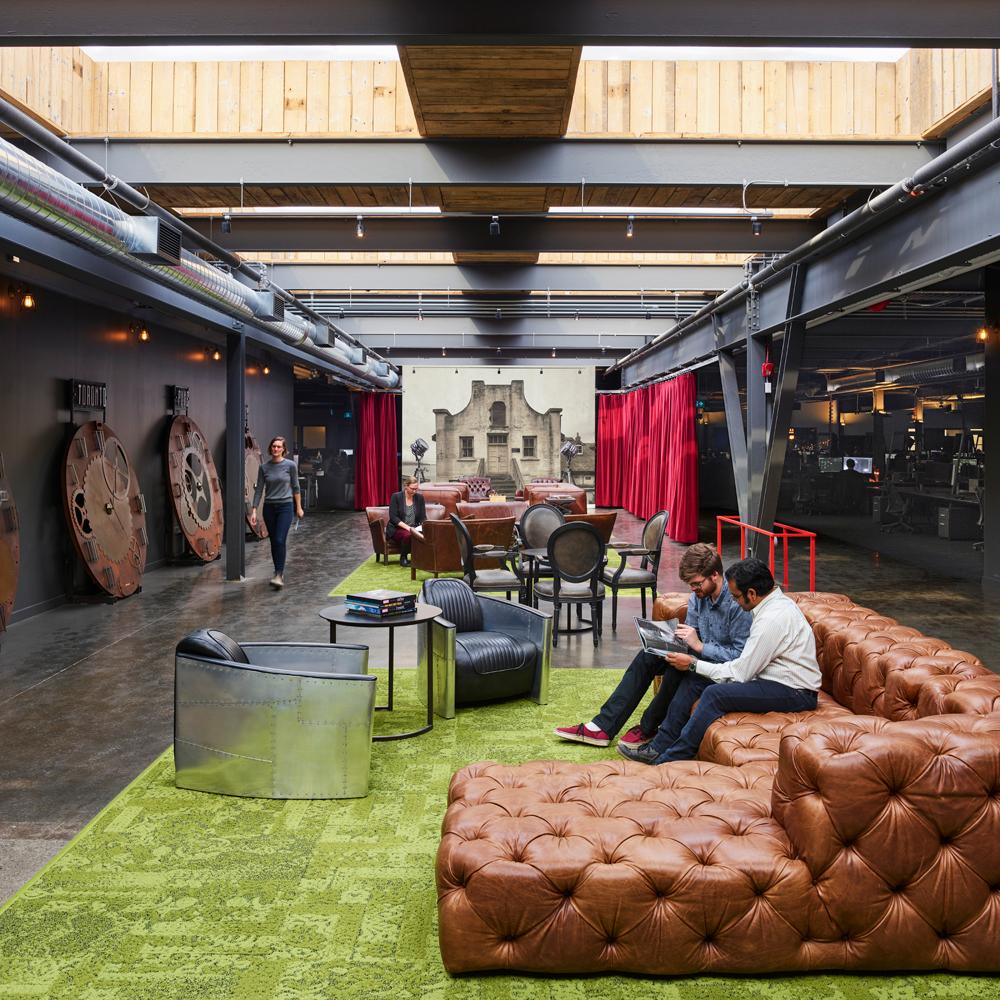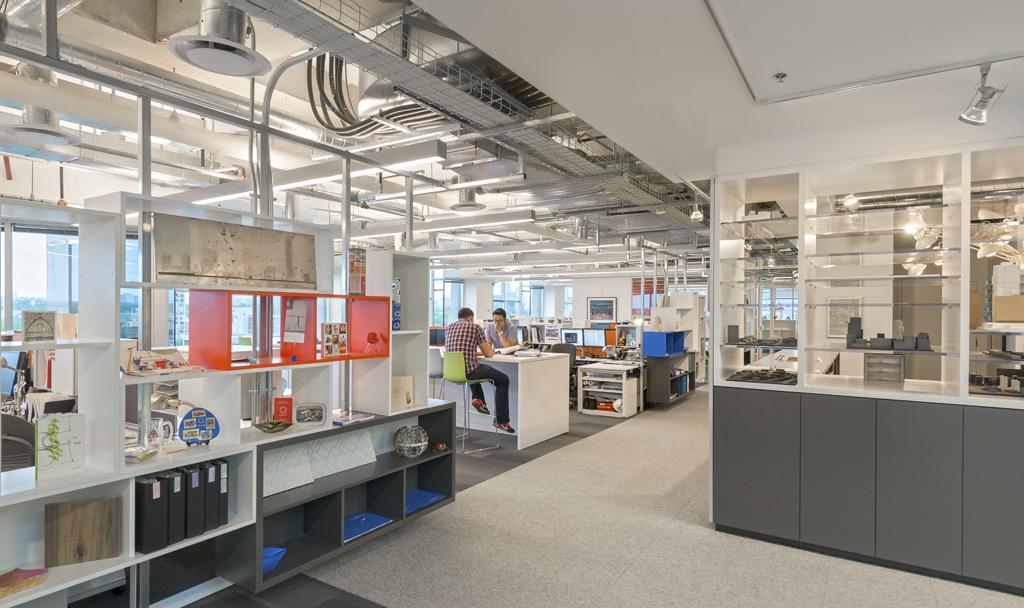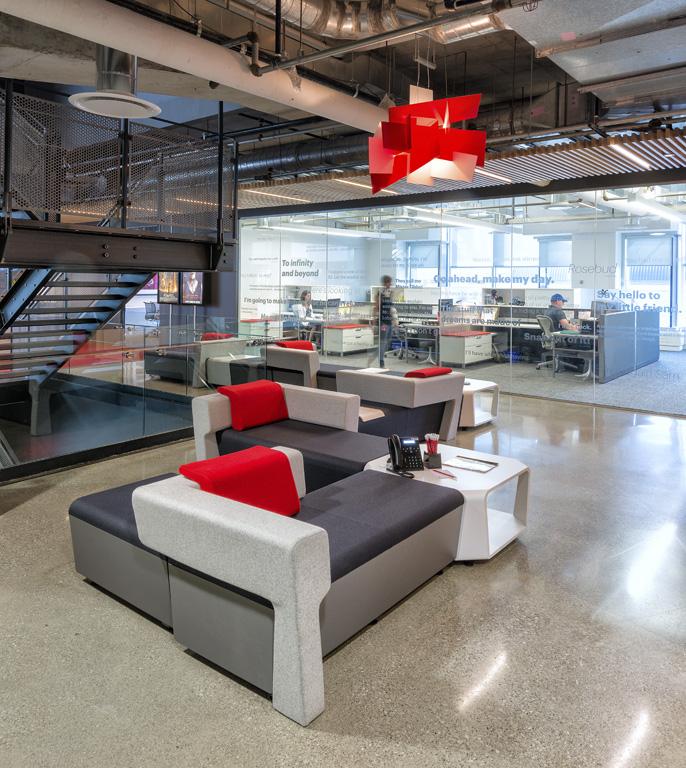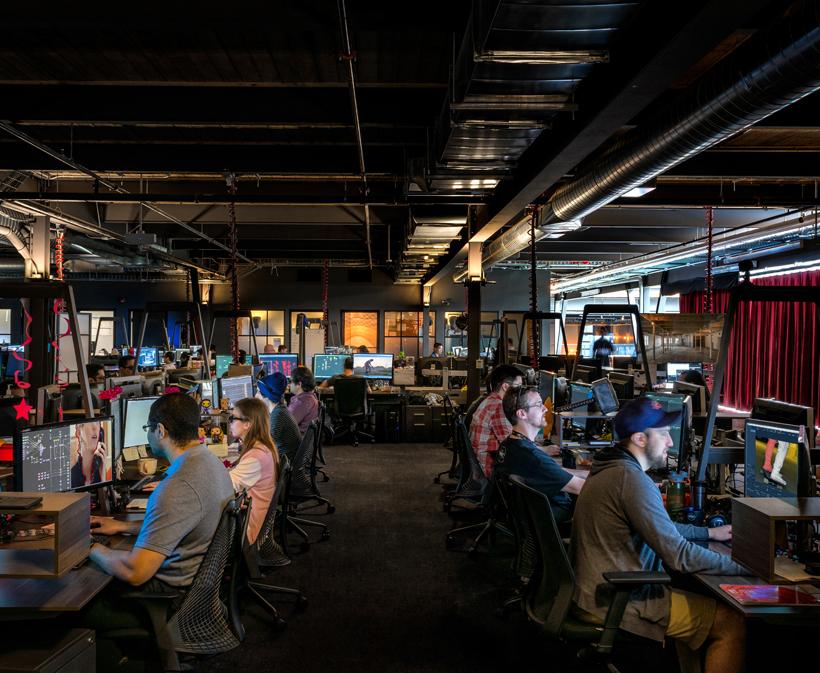
As growth in Canada’s economic hubs continues, viable new commercial building space in the downtown cores of cities such as Vancouver and Toronto is becoming scarcer. Available lots will more likely be taken up by developers using these footprints for real estate intensification as demand for housing in these big cities continues to grow. What this leaves for viable commercial development space is relegated to outdated or less loved office buildings, typically low to mid rise structures, built within the last twenty years. Quadrangle’s own studio is an example of what can happen when a fresh approach is used on one of these otherwise unremarkable, but available, spaces. In this case, Quadrangle was able to take advantage of a building which had great structure and bones that allowed for inspiring opportunities with both height and light.

Following the renovation of our own studio, more creative tenants were drawn to the 1990s era building such as post-production studio Deluxe, Portfolio Entertainment and Spin VX. Companies such as these require specialised outfitting, and the former call centre building provided the blank slate and large column-free floorplan to allow its floors to be tailored to the most specific and unique requirements. For Deluxe, Quadrangle designed a private movie theatre for client screenings as a new addition to the penthouse floor.

Historic, brick-and-beam factories and warehouses that first drew tech and creative industries to the westerly part of the downtown — Liberty Village and the area around King Street West and Spadina Avenue — have seen rents and demand creep closer to the range of the Class A financial district towers. Even those in the Waterloo-Kitchener corridor are in high demand and nearly all retrofitted and leased.
Stereo D and 60 Atlantic in Liberty Village are also great examples of what creative tenants have done to revitalize historic neighbourhoods. Stereo D found its home in the former Canada Bread Factory at 2 Fraser Avenue and Quadrangle was able to adapt it to suit their unique needs. While the democracy of light is the trend of every workspace these days, Stereo D required darkened artist spaces in order to render their stereoscopic 3D content for major motion pictures. The award-winning 60 Atlantic Avenue is a three-storey commercial building originally built in 1898 as a wine warehouse, the restoration of which demonstrates the value and relevance of such heritage properties as newly revitalized and unique workplaces.

We’ve all heard that Toronto is North America’s fastest-growing tech market, but what does that mean for real estate? There are additional incentives besides carving out downtown space for offices that creative workplaces have in common. New media, start-ups and other creative hubs want to keep their employees happy, as much of their success depends on employee retention, even as they grow and expand. These spaces they inhabit need to remain cutting edge but consistent to their brand ideologies and identities, concerns that can be addressed throughout the design process.
Competition is a big concern of these types of creative workplaces. Retaining staff and going beyond trends to identify innovative amenities and features that will reflect future ways of working will inform the improved design of commercial spaces and challenge the status quo as to what’s possible with a plethora of antiquated properties. In a city where vacancy rates are at an all-time low, we need to reimagine and renovate these buildings, rather than tear them down and start from scratch. LEED®, WELL, BOMA Best, and Fitwel are all ways to create improvements to the built environment, however, re-envisioning existing assets should be our focus on how to contribute to greener development practices. Moreover, it pushes the bar in terms of how inspiring and innovative we want our cities to look.